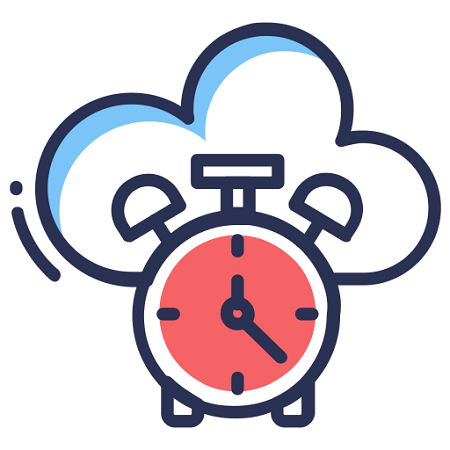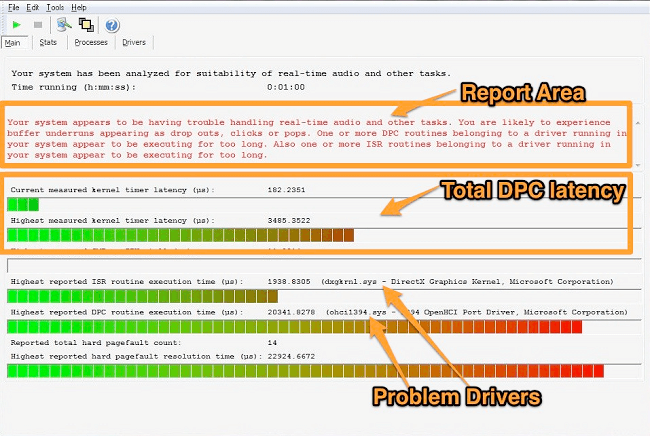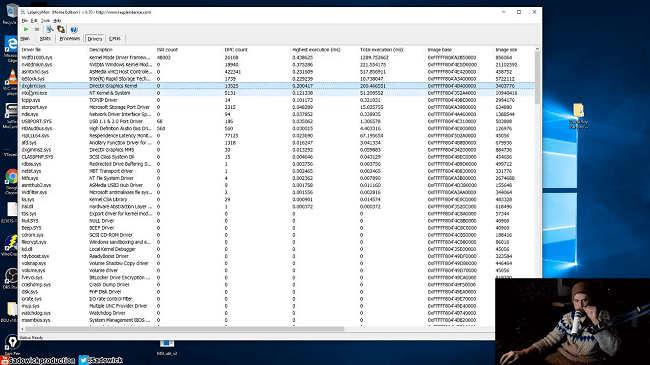Latencymon Download Crack Free For Windows Latest Version
Windows-Based Latencymon Download Crack Is Suitable For Real-Time Audio Processing And Other Task
Latencymon Download looks into possible reasons for buffer underflows using kernel timer latencies, ISR execution times, and hard page fault detection. In addition to identifying the kernel modules and processes causing the audio delay that results in dropouts, Latencymon will display a clear message. But it also has functions for hard page fault monitoring, DPC monitoring, and ISR monitoring. Software will show the highest kernel timer latencies and report the highest ISR and DPC execution times as well as hard page faults. In most cases, it will also find the drivers and processes responsible for running them. It creates an easy-to-understand report that also displays all sampled data in detail, allowing you to perform in-depth analysis.

Overview:
In most cases, it will also find the drivers and processes responsible for running them. It creates an easy-to-understand report that also displays all sampled data in detail, allowing you to perform in-depth analysis. High latency Interrupted Service Routines (ISRs) and Deferred Procedure Calls (DPCs) prevent your CPU from processing digital audio efficiently in real-time (or ever). Latencymon by Resplendence is a free tool that checks your computer’s ability to process digital audio. It identifies kernel modules and processes causing high latencies that lead to audio dropouts. It also works well as a simple ISR, DPC, or hard-page fault monitor.
Key Features of Latencymon Download:
- Check sound suitability in real time
- Easy to use
- Simple interface
- Reporting DPC and ISR execution times
- Find the drivers and processes responsible for the execution
- Do an in-depth analysis
What’s new in Latencymon Download:
- Latency mon in 7.30 always shows zero values in the driver and process tabs.
- This issue was introduced in version 7.30 and has been fixed. Previous versions of it would not work on certain Windows 11 Insider builds; we have fixed the issue.
- It would not start a second time
- Windows 10 version number will display
- Several minor updates and changes apply
Screenshots:


Technical details and system requirements:
- Supported OS: Windows 10, Windows 8.1, and Windows 7
- CPU: Intel Pentium 4 or higher; AMD Athlon 64 or higher (900 MHz or higher)
- RAM (Memory): 4 GB or more (8 GB or more recommended)
- Free hard disk space: 400 MB or more
- Display: XGA (1024 x 768), full color (24-bit or higher), 16-bit display (32-bit recommended)
Does this program work on Windows XP? (H4)
No, Latencymon Download requires Windows Vista or later.
Will there ever be a version that runs on Windows XP?
No, Latencymon Download relies on information from the ETW kernel logger, which is only available in Windows Vista and higher. When you run the program, you get an error message that the procedure entry point was not found in the module. This probably means you are running it on an old version of Windows. It requires Windows Vista or higher.
It seems to cause a latency spike on startup or when clicking the start button. The software checks the CPU measurements to see if the system is severely throttled due to variable CPU speed settings and possibly thermal issues. Because DPC and ISR latencies could otherwise affect the result, this must happen at a high IRQL, which means that most interrupts are temporarily disabled. We will not report this spike on its own.
Should I run my audio software while LatencyMon tests my system?
Absolutely not; in particular, the process interruption latency, which the software measures, already simulates the operation of the entire audio process. You should run most tests without any other software running in the background. Running your audio software together with it only makes sense if you want to measure hard page errors of the audio process.
How to use:
The following procedure will teach you how to download, install, run, and capture latencymon data that is used for troubleshooting.
- Download Latencymon Download it and install it.
- It is imperative that you test DPC latency using the same software configuration you normally use when running digital modes. Do this by loading all the programs you use on your computer before starting the DPC latency test.
- This includes SmartSDR, DAX, your digital mode program, and any other programs you use when running digital modes, such as a recorder or “helper” programs (JTAlert, Slice Master, etc.).
- If you normally have other programs open at the same time, such as a web browser or e-mail, open those programs as well.
- After loading all applications, run it.
- Click on the green side triangle to start tracing. Run the SDR application and the digital mode program to observe audio anomalies.
- Let Latencymon run until you detect audio issues, even if it takes a few hours.
- The minimum time to collect DPC latency data should be 15–20 minutes to obtain a sufficient data set for a complete analysis.
- Then click the red square to stop tracing. Click Edit and select “copy report text to clipboard.”.
- Then copy the message to a text file or to your Helpdesk ticket so that a technical support engineer can evaluate the results.
Conclusion:
The usefulness of Latencymon Download lies in the fact that Windows is not a real-time operating system. All requests you make to the operating system are executed according to a system based primarily on efficiency, which does not guarantee that they will be delivered within a certain time frame. This isn’t a problem for the vast majority of tasks you do on your computer, but it is a problem for audio applications because they need to deliver blocks of data to subsystems and hardware devices multiple times per second.
With that in mind, it’s easier to understand LatencyMon’s emphasis on showing if your computer is capable of processing real-time audio without problems or degradation. Best of all, getting this information is as simple as clicking the Start button and waiting a few seconds. The analysis usually takes no more than 10 seconds, so you will get the answer you were looking for in the blink of an eye.
